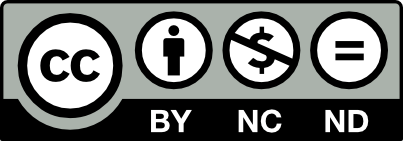This page is licensed under Creative Commons under Attribution 4.0 International. Anyone can share content from this page, with attribution and link to College MatchPoint requested.
Early Decision: Big Boost or Big Barrier?
For families everywhere, the phrase Early Decision raises as many questions as it answers. Is it a golden ticket into selective colleges? Or is it a gamble that limits financial options too soon? The truth is that Early Decision (ED) is both a boost and a barrier. It increases the odds of admission at many colleges, yet it also requires families to make binding commitments before they can compare aid offers. The data shows clear patterns that can help you decide whether this strategy is right for your student.
Where This Data Comes From
Each year, our colleagues Jennie Kent and Jeff Levy compile and analyze data from the Common Data Set (CDS), a standardized report that colleges and universities across the U.S. complete annually. The CDS includes detailed information on admissions practices, financial aid, graduation rates, student demographics, and more. It was created through a collaboration between the College Board and higher education associations to make reporting consistent across institutions.
By putting hundreds of these reports together, Jennie and Jeff reveal patterns that no single school report can show on its own. Their work helps us see how Early Decision changes admission rates and reshapes classes. Families who want to explore the full analysis can find it here.
The ED Advantage
On average, students applying ED are admitted at 50 percent, compared to 44 percent for Regular Decision (RD). That six-point difference matters, especially at selective colleges where every spot is contested.
Take Williams College. The ED admit rate is 23 percent, while the RD rate is just over 7 percent. That is a three-to-one advantage. Tufts University in Massachusetts and Colgate University in New York show similar gaps.
Here in Texas, Rice University uses ED to shape its class. Students who apply early often have a statistical edge, but they must be prepared to commit without comparing offers. Southern Methodist University (SMU) also offers ED, but its approach is different. SMU admits students early but still leans on merit aid as a tool to attract strong applicants.
How ED Reshapes the Class
ED is not just a boost for individuals. It is also a lever that colleges use to control the composition of their freshman class.
Data shows that the share of a class admitted through ED correlates strongly with overall selectivity (r = 0.58). In plain terms, the more selective a school is, the more it relies on ED. Davidson College in North Carolina admits nearly half its class this way. Vanderbilt and Duke, both in the South, also use ED heavily.
The other side of the story is that schools which depend on ED often have lower admit rates for RD applicants. In fact, the higher the share admitted ED, the tougher it becomes to get in through RD. This is why ED can feel like both a boost and a barrier. It helps the students who commit, but it raises the bar for everyone else.
The Barrier: Financial Flexibility
The biggest drawback of ED is often financial. Students admitted ED must commit to attend and withdraw all other applications. Families lose the chance to compare aid packages across multiple colleges.
This matters most for families hoping for merit aid. Schools that rely heavily on ED, like Rice, Williams, and Amherst, rarely offer merit. Their focus is on meeting need. By contrast, schools like Baylor or Creighton use merit as a major enrollment tool. Baylor often awards $20,000 or more in merit scholarships to non-need students. Families who apply ED at schools like these may miss the chance to see what other offers could have been.
For families who want both the ED admissions advantage and a large merit award, the reality is sobering. At most colleges, you cannot have both.
Takeaways for Families
- ED provides a real advantage. At many selective colleges, the odds are meaningfully higher for ED applicants.
- Financial tradeoffs are real. Binding ED means no chance to compare aid packages. For families counting on merit aid, this can be a serious limitation.
- Regional patterns matter. In Texas and the South, schools like Rice, SMU, Vanderbilt, and Duke all use ED strategically. Public flagships such as UT Austin and Texas A&M do not use ED, relying instead on state admissions policies.
Early Decision is not simply good or bad. It is a powerful tool that changes the admissions landscape. For some students, especially those focused on highly selective schools like Rice or Davidson, ED can make sense. For others, especially families hoping for large merit awards, Regular Decision may offer more flexibility.
The key is to approach ED with clear eyes. Understand how it boosts odds, how it reshapes the class, and how it narrows financial options. With that clarity, families can make decisions that fit both their student’s goals and their financial comfort.



